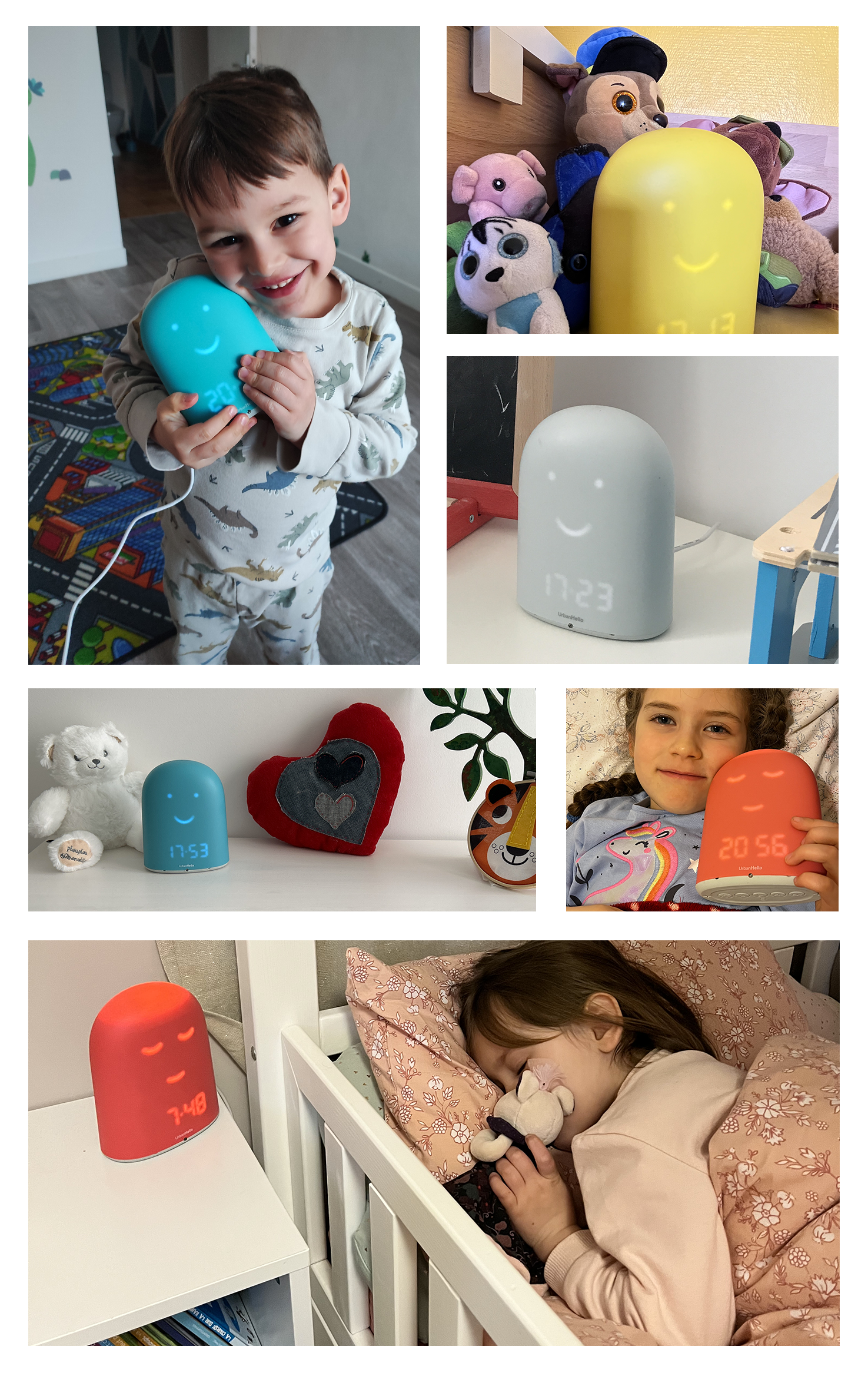Toddler nightmares and what to do about them?

It’s 4:30 in the morning, and your little one walks into your bedroom with tear-filled eyes—maybe even sobbing and barely able to speak. The reason? A bad dream featuring monsters, witches, and all the spooky creatures that haunt toddler nightmares. Falling back asleep feels impossible without the comfort of Mom or Dad nearby.
Here’s a quick guide to help you respond the right way and free your child from recurring nightmares.
Key Signs of Toddler Nightmares
Before the age of 4, young children struggle to clearly distinguish between dreams and reality. That’s why scary nighttime images can feel so overwhelmingly real and frightening to them.
Even though we’ve all experienced them, it’s important to understand a few key characteristics of toddler nightmares:
- They’re bad dreams that occur occasionally during the REM (rapid eye movement) stage of sleep —usually closer to the end of the night.
- Your child is fully aware of the images in the nightmare, which is why they feel so intense. If your toddler is old enough, they’ll likely explain what scared them. Younger children may simply point toward where they saw the “ monster” to have it chased away.
- There are usually few physical signs like sweating or increased heart rate. After a nightmare, the senses are alert, and your child is fully conscious of their surroundings. They scan the room for reassurance—the fear comes from the images stuck in their memory.
- Nightmares tend to wake a child when the emotions felt in the dream become too overwhelming. Unlike night terrors—where a child may seem confused or not recognize their parents—nightmares leave them fully awake and often crying or calling out.
- The nightmare remains vivid, and your child needs your comfort to feel safe. They're often afraid to fall back asleep for fear of reentering the same scary world. This can make bedtime a real challenge, with kids getting up repeatedly and refusing to settle down.
- A nightmare tends to linger in your child’s mind for several days as they process what they saw. You may also notice a change in mood during the day as a result.

6 Tips to Help Stop Toddler Nightmares!
Remember that every child is different, and what works for one may not work for another when it comes to managing nightmares. Be patient, and try out different strategies until you find what helps your little one sleep peacefully again.
Also keep in mind how important it is to stay calm and positive when talking about nightmares. Your gentle, loving tone can be a powerful comfort and will help your child feel safe and conquer their nighttime fears.
If the nightmare keeps happening night after night, try to identify any possible triggers—without playing amateur psychologist. Something as simple as an argument with a friend during the day could easily turn into a terrifying fear of going back to school in their dreams!
Take, for example, a baby just a few months old. They may experience frequent nightmares after their mom returns to work, feeling afraid of losing her. They’re learning that Mom can’t always be there—and that can be really scary.
A simple game of peekaboo, where Mom disappears and reappears with a big smile, can help your little one process that fear and let go of their bad dream!
You can also have fun together creating a silly photo frame! Ask your child to pick their favorite photo of you. Decorate the frame together and place it in their bedroom. At bedtime, look at the photo with them and remind them that you're always nearby, watching over them.
Turn the scary monster into a goofy character, or add bright colors to make the picture less frightening. Once the drawing is done, hang it in their room and explain that this is a way to take control over their fears. Let them know you're there to protect them and that bad dreams don’t stand a chance. This small gesture can help your child feel safe and secure at night.
At bedtime, invite your little one to choose two pictures they really love—ones they’d like to dream about tonight. You can even include photos of family members!
To help you create a magical dream box, you can download our printable PDF with 33 cut-out cards to draw from each night—perfect for inspiring sweet dreams at bedtime!
👉 Let your child pick a card they love. Start telling a short story based on the image, then ask them to finish the tale in their dream! This gentle bedtime ritual can ease nighttime stress and help your little one drift off to sleep more peacefully.

How to Respond to Toddler Nightmares
It’s important to understand that nightmares in young children are normal and even essential to their emotional development. Nightmares can actually help your little one regulate and process emotions.
Depending on their developmental stage, your child may go through periods of frequent bad dreams. So how you react as a parent should naturally adapt to your child’s age.
During the first two years of life, it’s impossible to know exactly what kind of images or dreams your baby might be experiencing. Only facial expressions or small body movements might hint at whether the experience is positive or upsetting.
It’s only around age 2 that your child begins to express or act out what scared them. At first, these fears are very basic—like being afraid of losing Mom or Dad—but they later evolve into more symbolic fears, involving monsters or imaginary creatures.
No matter how old they are, the core need stays the same: your child needs comfort and reassurance. Fully awake, they call out for Mom or Dad to help them feel safe again.
👉 Nightmares Before Age 2:
- Your little one doesn’t yet understand the difference between dreams and reality.
- Explaining what a nightmare is won’t help at this age!
- The images they’ve seen feel completely real to them. What they need most is your calming presence and your gentle voice, reassuring them that everything is okay and helping guide them back to sleep.
👉 Nightmares After Age 2:Your child gradually begins to realize that the images in their head don’t always match reality.
They’re able to describe what frightened them, but they still don’t have the tools to process fear on their own. Once again, offering simple comfort is the best way to help.
- Try not to go too far into the “game” of the nightmare—don’t pretend to put out fires or check under the bed for monsters. For some kids, this can make the fear feel even more real. The best remedy: a warm hug and lots of affection!
- Let them know you understand their fear—nightmares can feel very real and scary.
- Help them calm down by giving them their favorite comfort item or playing soft music.
- Take their fear seriously and try to understand if something is bothering them at daycare, school, or home.
- Leave their bedroom door slightly open and reassure them that you’re close by.
- Be patient if they talk about the nightmare the next day. Listen closely to what they’re worried about.

Could It Be a Night Terror Instead?
It’s important to know the difference between night terrors and nightmares. It’s very easy to confuse the two!
With a nightmare, your child experiences a frightening dream. Once they wake up, they can remember what scared them, which often leads to tears. Falling back asleep can be difficult after a nightmare.
A night terror, on the other hand, comes on suddenly and partially during sleep. The child may scream or cry out, but they won’t remember it once they wake up. They usually fall back asleep quickly without any help. During a night terror, your baby doesn’t need your intervention to return to sleep. In fact, they won’t respond to you—they won’t see or hear you at all. The best thing to do is wait patiently and allow them to settle down on their own. It usually passes within 20 minutes.
Keep in mind that both night terrors and nightmares are a normal part of sleep development. As long as they’re not happening every night, there’s no reason to worry!
To help you tell the difference more clearly, here’s a comparison between night terrors and nightmares:
If your child:
- is extremely agitated, screaming or crying out
- sweats and has a fast heartbeat
- has the episode in the early part of the night
- doesn’t recognize you when you try to comfort them
- falls back asleep quickly as if nothing happened
- remembers nothing the next morning
If your child:
- cries or screams during the episode
- is awake during the event
- has the episode in the middle of the night
- can describe what scared them
- needs your comfort to feel safe again
- remembers the dream the next morning
How to Prevent Toddler Nightmares
A consistent bedtime routine and a calming environment are essential for keeping nightmares at bay. Remember, they’re a normal part of childhood.
Here are a few helpful tips to prevent toddler nightmares and support better sleep:
Start by establishing a soothing and predictable bedtime routine. Having set times for sleeping and waking up helps regulate your child’s internal clock and supports healthier sleep patterns.
Make sure your child’s bedroom is a sleep-friendly space: quiet, tidy, and comfortable. A peaceful environment can make a big difference.
Pay close attention to your child’s diet before bedtime. Avoid heavy meals or sugary snacks late in the evening, as these can disrupt sleep. Instead, aim for light, balanced dinners that promote relaxation.
Limit exposure to scary or stressful content—including violent movies, shows, or video games. These types of stimuli can influence dreams and increase the likelihood of nightmares.
Creating a calm, relaxing atmosphere before bed can help prevent nightmares. Offer your child quiet activities like reading a gentle bedtime story or practicing calming techniques such as deep breathing or simple guided meditation.
Most importantly, make sure your child feels safe and supported. Encourage them to talk about any fears or worries before bedtime, so they don’t carry them into sleep. Reassure them that you’re always there to listen and comfort them if needed.
By following these tips, you’ll be better equipped to prevent nightmares and help your child enjoy restful, peaceful sleep.
Discover REMI
THE SMART BABY MONITOR 😊
REMI and its app bring together everything you need to manage your baby’s sleep!
Its mission? Helping families sleep better — from birth up to age 10.
I bought REMI for my 4-year-old son who didn’t want to sleep alone anymore after his little sister was born. Thanks to the remote wake-up system and bedtime stories I can play from a distance, the issue is completely resolved! I 100% recommend this purchase!






 White noise for baby : a scientific research !
White noise for baby : a scientific research !
 What are the positive effects of napping on memory?
What are the positive effects of napping on memory?
 When do babies sleep through the night ? Tips and tricks !
When do babies sleep through the night ? Tips and tricks !
 Night terrors in babies: don't panic!
Night terrors in babies: don't panic!
 1 Month Old Baby Sleep : Common Questions
1 Month Old Baby Sleep : Common Questions